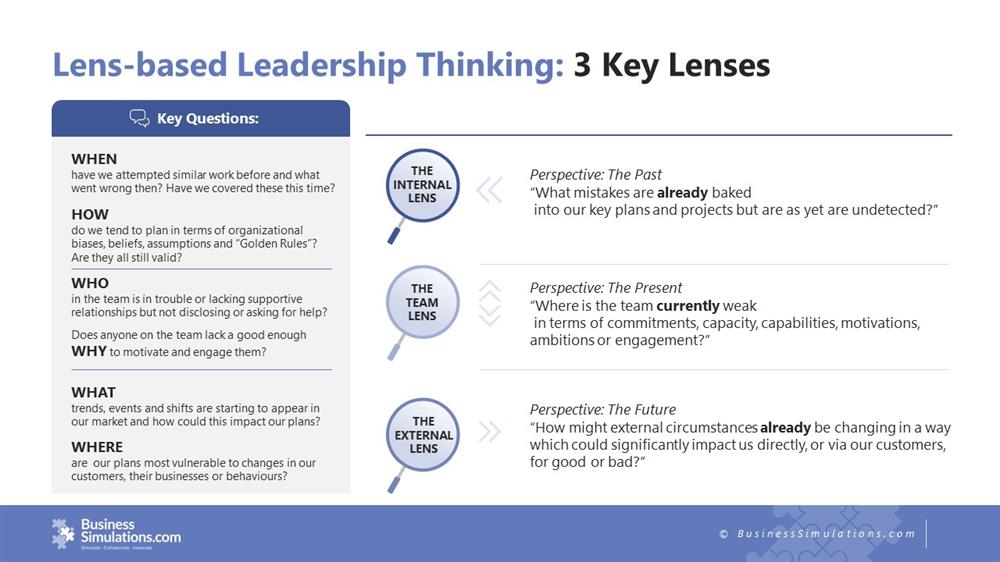There are at least 3 “lenses” or perspectives (or even hats - thanks Edward de Bono) which leaders need to be able to use to provide them with effective early warning systems of hidden problems in current operations and projects.
The Lens-based thinking discipline allows leaders to “escape” from the blinkers of relentless operational pressure on a regular basis to see what else important might need taken care of urgently.

1. The Internal Lens
The Internal Lens is about looking into the near PAST and the biases and assumptions on which we, as an organisation or team, tend to rely.
What we are looking for with this lens is:
“WHAT mistakes or faulty thinking are already baked into our key plans and projects but as yet undetected?”
2. The External Lens
The External Lens is about looking into the near FUTURE to see what is currently unfolding or emerging in our market.
What we are looking for with this lens is:
“HOW might external circumstances already be changing in a way which could significantly impact us directly or via or our customers for good or bad?”
3. The Team Lens
The Team Lens is very much about TODAY and being able to read the unspoken warning signs and subtle attitudes which show up in our formal and informal meetings with colleagues.
What we are looking for with this lens is:
“Where is the team currently weak in terms of commitments, capacity, capabilities, motivations, ambitions or engagement?”
New lenses are always blurry and tiring till we get used to them
Lens-based thinking does not come naturally to leaders especially when all available time seems consumed by today’s operational urgencies, opportunities and crises.
This thinking discipline requires conscious effort to take off the current operational lens, which may be very comfortable, and put on a new lens which does not seem natural. Its like getting used to a new pair of glasses - you need to get used to wearing them even if they are very uncomfortable at the start.
Without developing this thinking discipline leaders are at risk of "flying blind" - lacking an effective radar capable of spotting obstacles, missiles and collisions in the path ahead.
Lens-based Thinking is NOT Blue Sky Thinking!
We should not confuse this kind of thinking with “Blue Sky” Thinking.
Blue Sky Thinking is about what might happen – Lens-based Thinking is about what has already happened but you just don’t see it yet!
Business Simulations, where leaders play key roles in the senior team of simulated organisations facing realistic scenarions, are a great way for leaders to develop Lens-based thinking skills in a safe and supportive environment.
Off-the-Shelf Business Simulations which are good for developing Lens-based Thinking include XSIM (B2C) and YSIM (B2B).